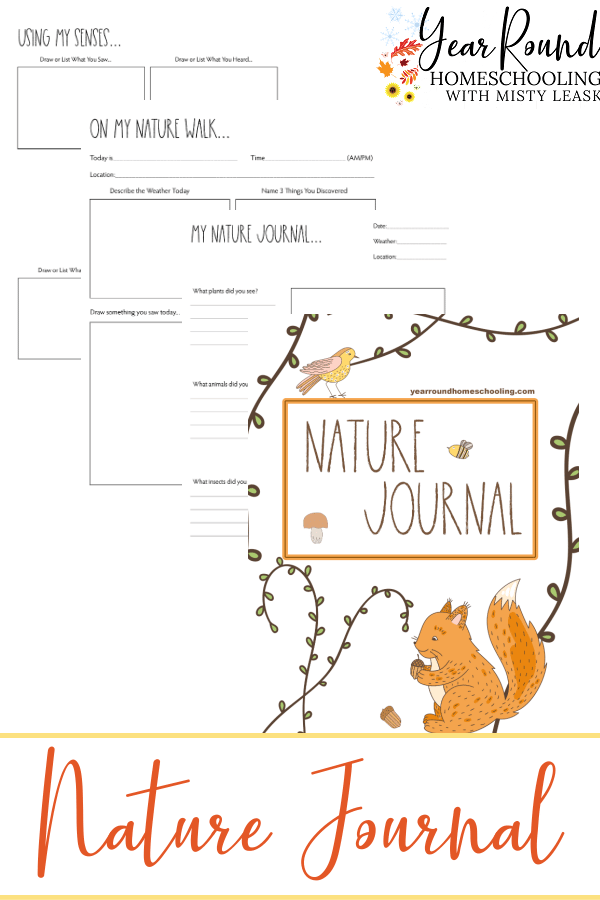A fall tree nature study is a great way to cover nature in your homeschool! I love it when the leaves start to change colors in the fall, don’t you?
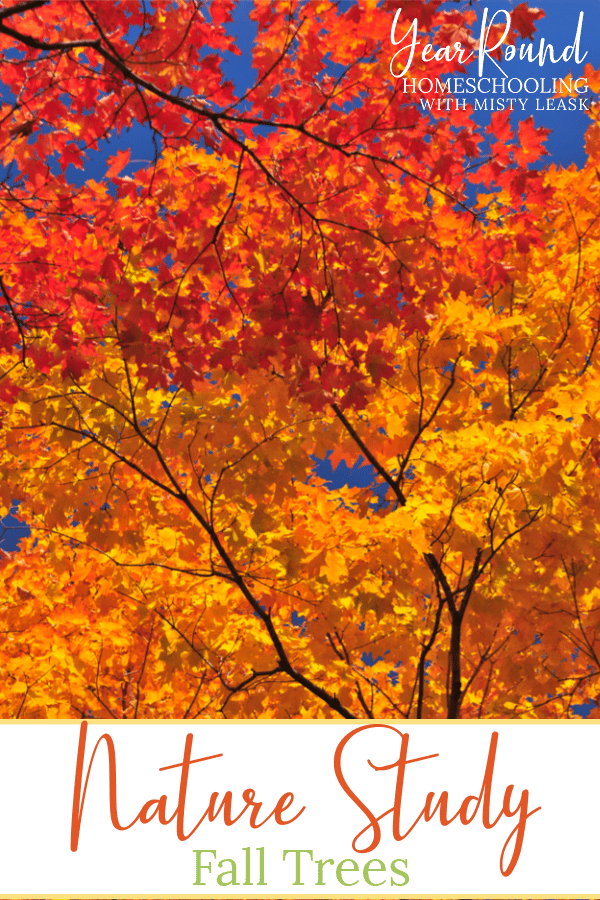
In Maine, the fall colors are at their peak just before Columbus Day weekend usually. While in North Carolina, leaves are at the peak of their color in October. There are some beautiful drives you can take along the shores of Moosehead Lake and on Blue Ridge Parkway through the mountains to see fall foliage.
Perhaps consider “adopting” one tree that you will observe throughout the year. Trees go through amazing changes. Even trees that are not considered “flowering” have some kind of flower.
Did you ever play with the “helicopter” seeds from maple trees when you were young? I did! I still remember it, and it was a lot of fun to toss them in the air and watch them twirl to the ground.
What about acorns? All of my children have enjoyed collecting them. We have at least two or three different varieties of oak trees in our yard, so that means different acorns. They have different tops and different shapes. See how many different kinds you can find.
When I visited a college campus for a conference this year, I noticed there were several different types of oaks, some I’d never seen before. I’m going to take my kids down there to see how many we can identify.
Take time to go outside, and find the tree with the prettiest color. See if you can find a leaf. You can sketch it, press it and stick it in your nature notebook, or do a rubbing. Also, do a rubbing of the bark. Sketch the shape of the whole tree.
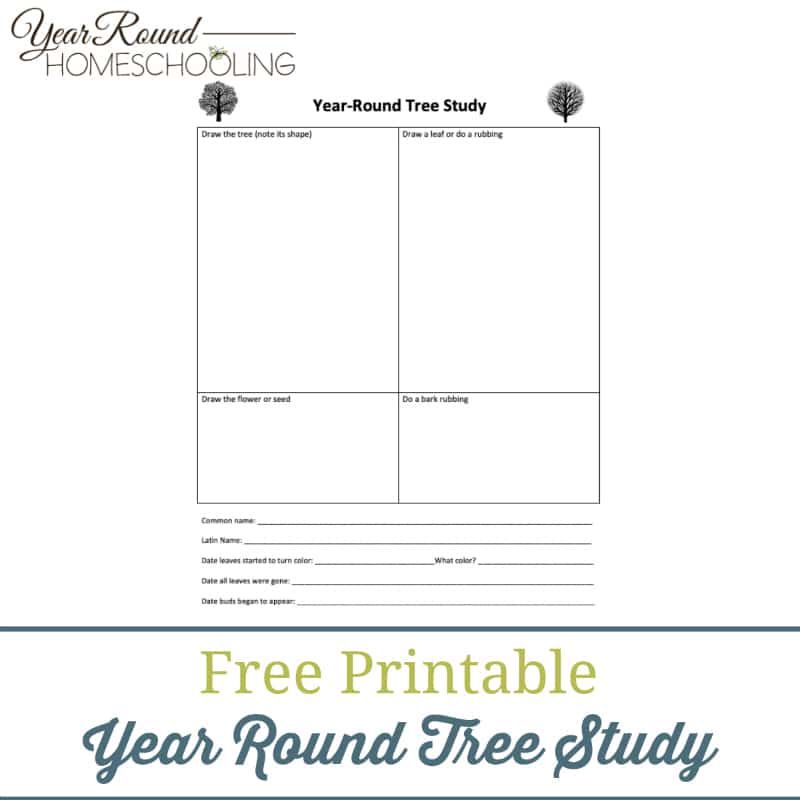
If the leaves are still green where you are, pay attention to when they start to change. When do you notice that all the leaves have turned? Did it take long? When do you notice that all the leaves have fallen?
I recently tried to preserve some leaves in wax paper but found that it didn’t work very well. So, I ended up laminating them. I’m not sure if wax paper just isn’t what it used to be, or if I did something incorrectly. It just did not work very well.
This last week while I was out running errands, I saw a tree I’d never noticed before. My eye was drawn to the interesting fruit. I thought the leaves looked like a dogwood’s, but I thought dogwoods had berries, not these orange balls!
When I got home, I did a quick internet search and learned that it’s a type of tree called a Kousa Dogwood. Apparently, the fruits are edible, and people make the fruit into jam. I had no idea! I hope to see the tree in the spring when it’s flowering. You can read a little more about the tree here if you’re interested.
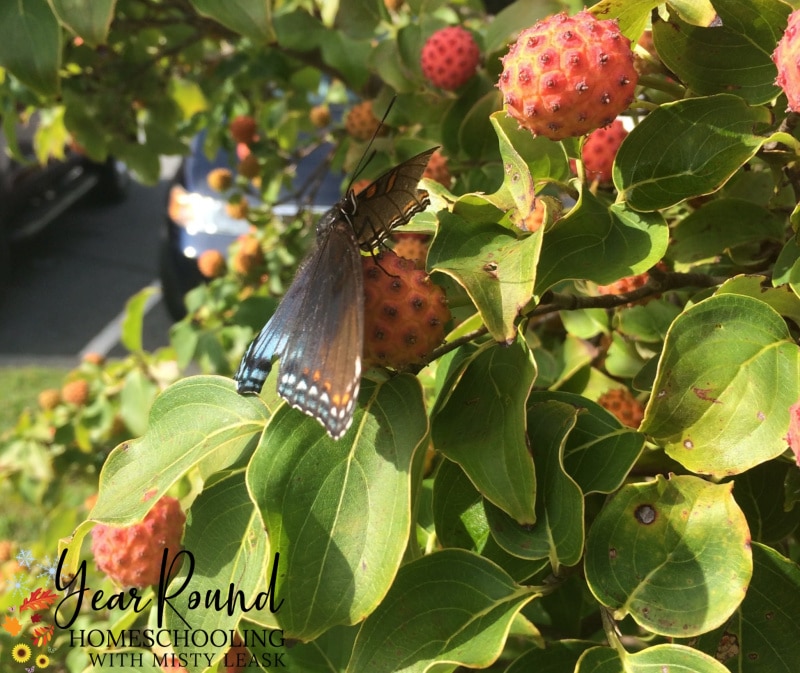
I have drawn a little sketch labeled with the parts of the tree and leaf which you will find as vocabulary words. If you don’t own this book, I highly recommend it. You could use only this book and give your children (and yourself) an excellent grounding in nature study.
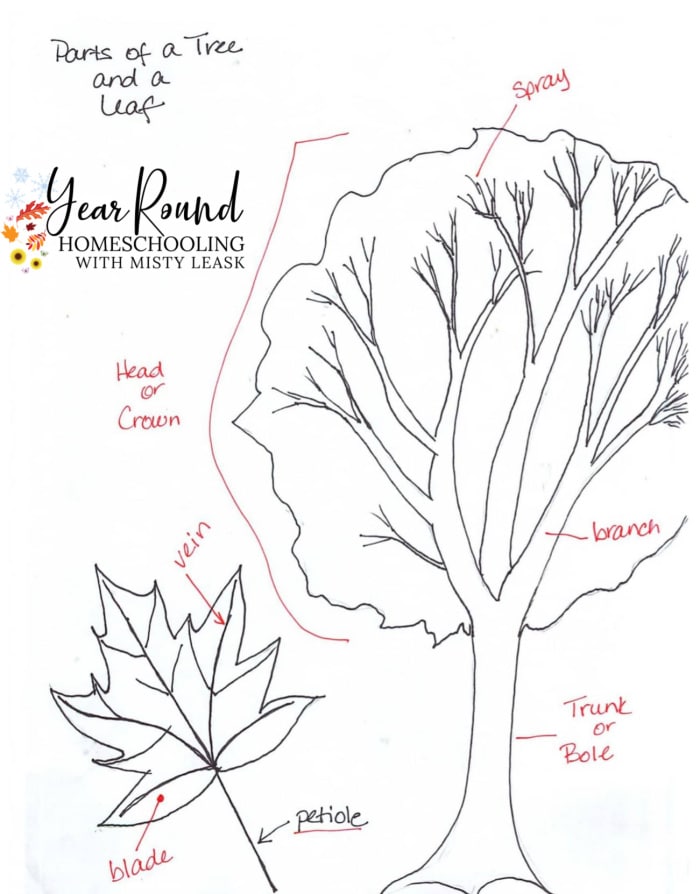
Below are a few more resources if you’re interested in field guides to supplement your nature walks as you look for new trees to identify:
- Seeing Trees: Discover the Extraordinary Secrets of Everyday Trees – This is an AMAZING natural history book about trees. It was recommended to me by other Charlotte Mason educators. If you want to cultivate an interest and love of trees, you want to read this book. Check and see if your library has it!
- Peterson First Guide to Trees – I love these small field guides. They’re perfect to tuck in a small bag when you go out walking.
- A Field Guide to Eastern Trees: Eastern United States and Canada, Including the Midwest (Peterson Field Guides) OR
- A Field Guide to Western Trees: Western United States and Canada (Peterson Field Guides) – I am partial to the Peterson guides for trees.
- Audubon Society Field Guide to North American Trees: Eastern Region OR
- National Audubon Society Field Guide to North American Trees–W: Western Region (National Audubon Society Field Guides) – The Audubon guides are nice too. I have both. If you’re going to choose one, I’d vote for the Peterson guide.
- The Urban Tree Book: An Uncommon Field Guide for City and Town – If you live in a city, you might find this book more helpful.
What fall nature studies do you do in your homeschool? Do your children enjoy studying the trees as they change color in the fall?


